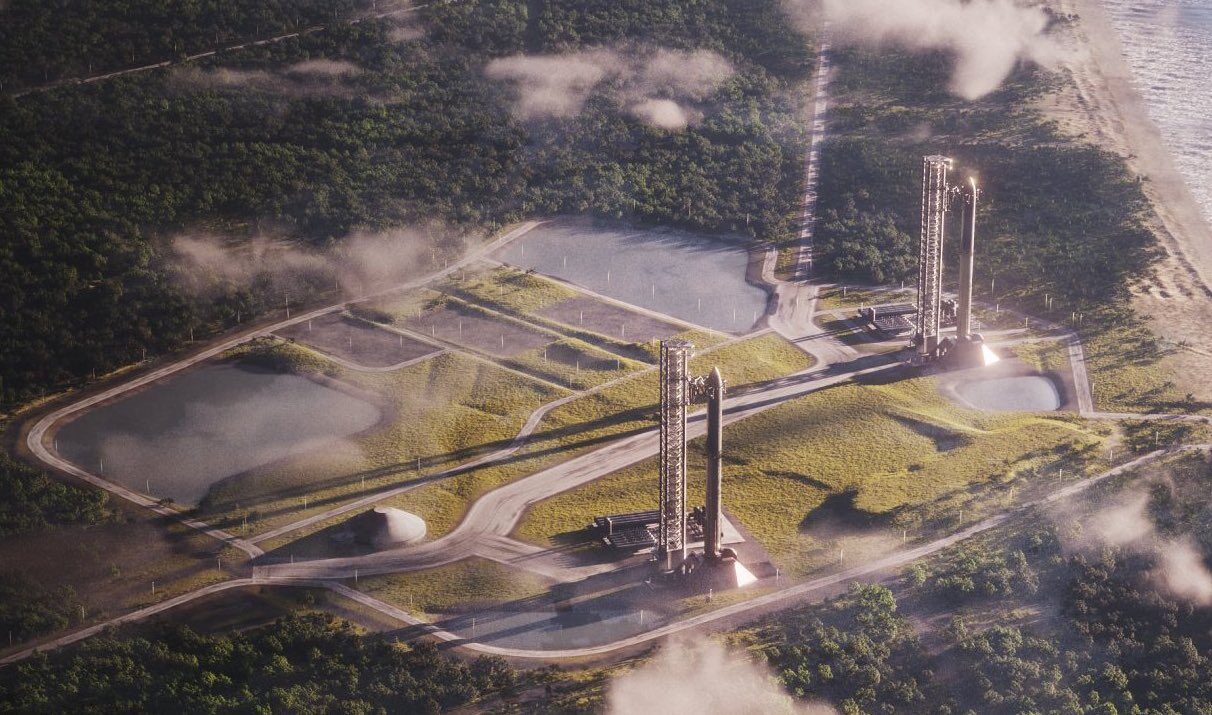Published: July 24, 2025, 11:15 PM EDT
Meta Description: SpaceX Starship 2025 update: Elon Musk’s live tech deep-dive before the next flight from Cape Canaveral. Explore NASA SpaceX Artemis program, Mars mission SpaceX plans, and more! Watch the SpaceX live stream on July 25!
New SpaceX website looks great!Lots of details on upcoming launches, not just the ones a day or two away.
— John Kraus (@johnkrausphotos) July 25, 2025
Awesome new Cape Canaveral Starship pad render, too.https://t.co/ICMmHxpmW3 pic.twitter.com/oa2MaMxOtB
SpaceX is gearing up for an Elon Musk Starship live update, announced on X earlier tonight, ahead of the next SpaceX launches from Cape Canaveral. The Elon Musk SpaceX CEO will deliver a technical deep-dive on Starship development “shortly before the next flight,” promising insights into progress, engineering, and future SpaceX rocket development plans—a significant departure from the company’s usual post-flight debriefs. With nearly 600,000 views on Musk’s post within hours, this SpaceX news event signals growing confidence in a program evolving from prototype to operational spacecraft.
SpaceX Cape Canaveral Launch 2025: Infrastructure Scaling for Operational Tempo
The timing of the SpaceX Starship 2025 update coincides with major infrastructure developments at Cape Canaveral, where SpaceX is building out Launch Complex 39A for sustained Starship operations. Photography from John Kraus, a prominent space photographer, showcases an “awesome new Cape Canaveral Starship pad” render, reflecting SpaceX’s ambitions for high-cadence Cape Canaveral Starship launches.
According to environmental documentation, SpaceX has received approval for over 40 annual SpaceX launches from Cape Canaveral—a dramatic increase that would make Starship one of the most frequently flown vehicles in the SpaceX Florida 2025 fleet. This shift moves beyond the experimental test program at SpaceX’s Starbase facility in Texas, adopting an operational mindset honed by the Falcon 9 program’s rapid reusability and launch cadence.
The new SpaceX Cape Canaveral infrastructure suggests the focus is now on how often Starship can fly, not just whether it can. This evolution reflects lessons from SpaceX launches, where high frequency has become a competitive advantage.
NASA SpaceX Artemis Program: Partnership Stakes
The Elon Musk Starship live update comes as NASA SpaceX collaboration intensifies. NASA selected SpaceX Starship as the Human Landing System for the SpaceX Artemis program, marking the first Moon landing since Apollo. As NASA stated, “Together, NASA and SpaceX have successfully executed bold partnerships, including restoring America’s orbital launch capabilities.”
The Starship HLS variant faces unique challenges, requiring flawless operation in lunar orbit, precision landings, and launches without ground support. Success would validate SpaceX rocket development and its rapid-development philosophy, building on Crew Dragon’s achievements. This NASA SpaceX Artemis program evolution hinges on iterative progress, a bet that could redefine aerospace.
SpaceX Mars Colonization Plans: Economics and Multiplanetary Vision
While lunar goals dominate near-term objectives, Musk’s ultimate vision is Mars mission SpaceX colonization. SpaceX’s target of a $2 million launch cost for Starship could transform space economics, enabling regular cargo flights and sustained Mars presence—currently unfeasible with costs in the hundreds of millions.
Musk has targeted 2029 for crewed Mars missions, aiming to establish a self-sufficient colony. Each Starship next flight 2025 validates systems like life support and landing engines, critical to SpaceX Mars colonization plans. The Mars render with a “speck of civilization” (X post) inspires this multiplanetary future.
SpaceX Technology: Technical Progress and Production Scaling
The May 2025 ninth test flight reportedly resolved engine bay issues affecting 80% of propulsion reliability—a SpaceX technology breakthrough unlocking accelerated testing. This progress, paired with manufacturing scaling at SpaceX facilities, shifts focus from concepts to operational systems.
Production scaling will likely dominate the Starship update. SpaceX has faced manufacturing bottlenecks transitioning to operational vehicle production, and overcoming these will determine if SpaceX launch cadence targets are achievable. The pre-flight timing of the Elon Musk Starship live update reflects confidence in these SpaceX technology advancements.
Industry and Economic Implications
Starship represents more than SpaceX rocket development; it’s a bid to solve the economics limiting space exploration. Success could enable orbital manufacturing, asteroid mining, and interplanetary travel, influencing industry approaches for the decade ahead.
As commercial space activities accelerate globally, SpaceX’s ability to demonstrate operational Starship systems could secure competitive advantages. Traditional aerospace lags behind SpaceX’s development pace, making this Starship update a pivotal moment.
What’s Next: Join the SpaceX Live Stream
The SpaceX Starship 2025 update will reveal if ambitious goals are becoming reality. Past presentations ranged from overviews to engineering details—the space community hopes for the latter. With 600,000 views on Musk’s announcement, public interest is intense.
As SpaceX prepares to share technical progress, the presentation could mark Starship’s transition from experimental program to operational system. Join the SpaceX live stream on July 25 to witness this inflection point for humanity’s space-faring future.
*Amazon affiliate, I may earn a commission.
Sources:
Starship HLS Program Details, Wikipedia
Elon Musk (@elonmusk), X post, July 24, 2025, 10:17 PM
John Kraus (@johnkrausphots), X post, July 24, 2025NASA SpaceX Partnership Announcement, spacex.com
Launch Photography Guide, launchphotography.com
SpaceX Mars Colonization Program, Wikipedia









Leave a Reply